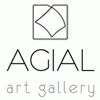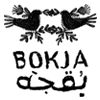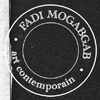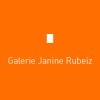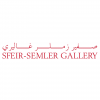Art Galleries In Lebanon
An art museum or art gallery is a building or space for the exhibition of art, usually visual art. Museums can be public or private, but what distinguishes a museum is the ownership of a collection. Paintings are the most commonly displayed art objects; however, sculptures, decorative arts, furniture, textiles, costumes, drawings, pastels, watercolors, collages, prints, artist s books, photographs, and installation art are also regularly shown. Although primarily concerned with providing a space to show works of visual art, art galleries are sometimes used to host other artistic activities, such as performance arts, music concerts, or poetry readings.
The term relates to public and private institutions. Public galleries are non-profit or public museums displaying selected art collections. Private galleries refer to commercial enterprises for selling art. However, both types may host traveling exhibits or temporary exhibitions including art borrowed from elsewhere.
In broad terms, in North American usage, the word gallery alone often implies a private gallery, while a public gallery is likely an art museum. In British and Commonwealth usage, the word gallery alone implies a public gallery, which is distinguished from a private or commercial gallery, and the word museum alone is understood to refer to institutions holding collections of historic, archaeological or scientific artefacts, rather than fine art.
The economy of Lebanon is a developing economy, with a private sector that contributes to 75% of aggregate demand and a large banking sector that supports this demand. The IMF forecast a growth of 7% for Lebanons real GDP in 2010 and 2011 following 9% growth in 2009 and 8.5% in 2008. It has the 54th richest GDP per capita in the world, and it was forecasted that Lebanons GDP per capita would reach $20,000 by 2015, making it one of the strongest economies in the region. However, the Lebanese economy was badly affected by the Syrian civil war. The institute of international finance forecasted GDP growth of only 0.7% for 2013. Lebanon also suffers from a very high degree of public debt, the third-highest in the world in terms of the ratio of debt-to-GDP. As a consequence, interest payments consumed 48% of government revenues in 2016, thus limiting the government’s ability to make needed investments in infrastructure and other public goods.
The major industrial sectors include metal products, banking, agriculture, chemicals, and transport equipment. Lebanon has a competitive and free market regime and a strong laissez-faire commercial tradition. The Lebanese economy is service-oriented; main growth sectors include banking and tourism. There are no restrictions on foreign exchange or capital movement.
Lebanon has a competitive and free market regime and a strong laissez-faire commercial tradition. The Lebanese economy is service-oriented; main growth sectors include banking and tourism. There are no restrictions on foreign exchange or capital movement, and bank secrecy is strictly enforced. Lebanon has recently adopted a law to combat money laundering. There are practically no restrictions on foreign investment. There are no country-specific U.S. trade sanctions against Lebanon.
Lebanon is a country in Asia and it is located in the western part of the Asian continent. Lebanon shares borders with just two countries Israel and Syria. The capital of Lebanon is Beirut and the official language of Lebanon is Arabic but many Lebanese also speaks French and English. As a matter of fact, English is rapidly becoming the first choice language that is used for business interactions in Lebanon.
The Lebanese economy revolves around Agriculture, Tourism, Commerce, and Banking.
Beirut the capital city of Lebanon has a very rich and robust nightlife hence attracting tourists who are heading towards the Middle East on vacation. It is important to note that Lebanon is ranked as 10th best country in terms of quality education and the 4th best country for math and science education in the world.
Lebanon is famous for its exquisite beauty, diversity, glamour, European flavor, and hospitable people. Its rich culture and history have placed it on the 'must see' list of every world traveler. Lebanese cities are among the most famous names in ancient history and majestic ruins still stand today as a testimony to the greatness of people who lived in this land.
The nature of Lebanon makes it the only country in the Arab world that embraces four seasons yearly. No matter what the season, there is always something special to enjoy. In the winter season, ski resorts offer tourists slopes that are comparable to even the best resorts in Europe. In the summer, international festivals all over the country in Baalbek, Byblos, Beiteddine, Batroun, and Jounieh bring together Lebanese and foreign artists to perform in stunning archaeological and historical sites. These events have given Lebanon an enviable place on the cultural map of the Middle East.
|










